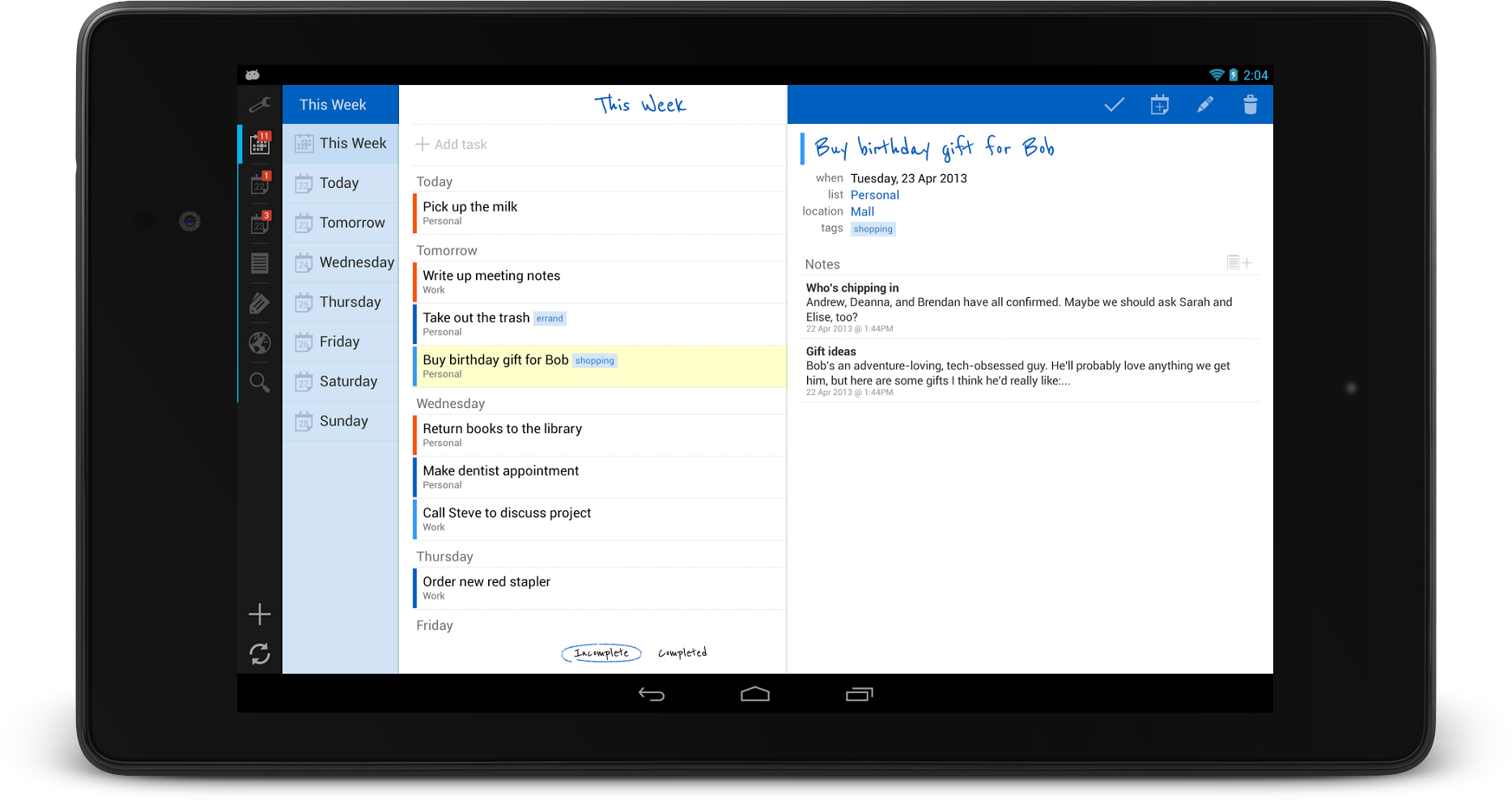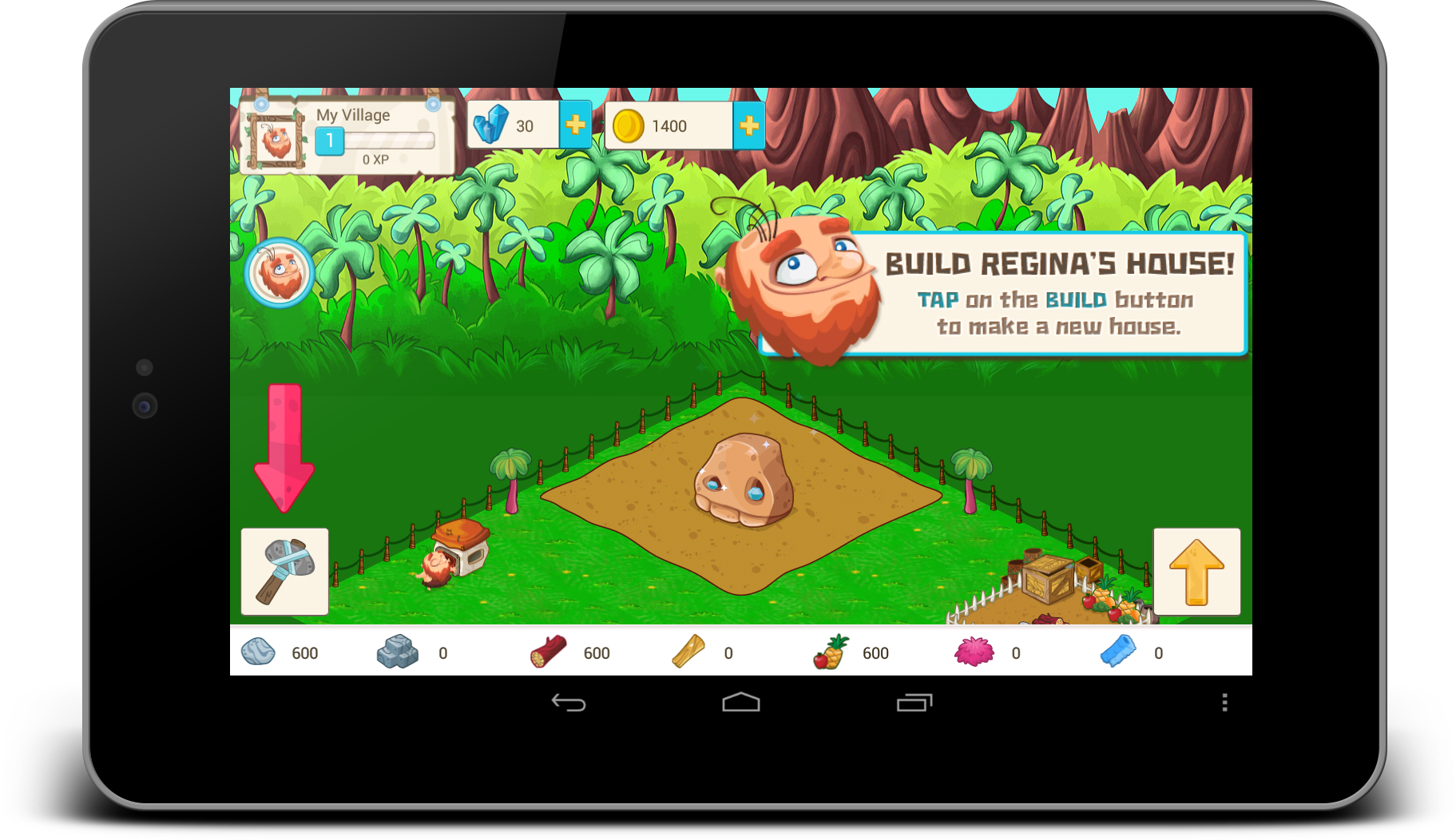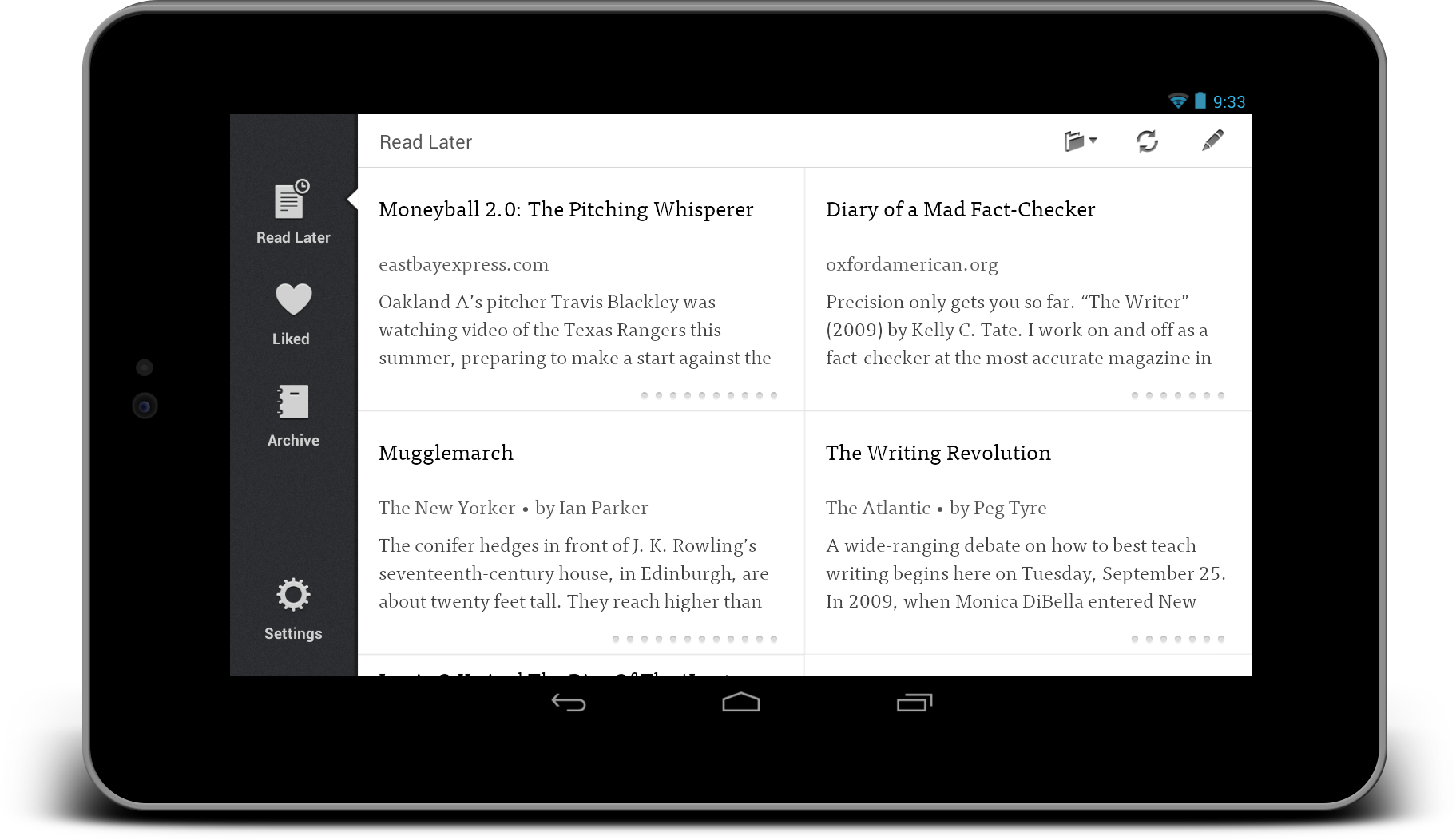More and more, developers are investing in a full tablet experience for their apps and are seeing those investments pay off big. The increased screen area on tablets opens up a world of possibilities, allowing for more engagement with the user — which can mean an increase in usage as well as more monetization opportunities. And with the growing wave of Android tablets that continue to hit the market, it’s an important piece of any developer’s mobile offering.
Here are some stories from developers who are seeing real results as they expand their offering to include Android tablets.
Remember The Milk: Lifting installs with tablet design
About the app
- Remember The Milk
- A feature-packed to-do list app; never forget the milk (or anything else) again
Tablet Results
- 83% jump in tablet installs following update
- Nexus 7 is most popular Android device for app
- Single APK for phones and tablets
When the Android tablet guidelines came out in 2012, the team at Remember The Milk had already been thinking about a redesign for their feature-packed to-do list app. Omar Kilani, Co-founder of Remember The Milk, explains how updating their app to meet the tablet guidelines lead to an 83% jump in tablet installs:
“We took this as an opportunity to think about how we were going to approach Android tablets differently from a user experience perspective. The guidelines were a helpful resource, and with the extra screen real estate tablets afford, users have the opportunity to see all of their data in context and drill down on more items. All of this is accomplished using a single APK on Play, even though the phone and tablet versions each capture completely different use cases for us.”
“In the month after updating, we saw our tablet installs on Google Play jump 83%, and the Nexus 7 is now the most popular Android device amongst our users. For us, designing for tablets was an investment that has really paid off.”
The team also came out with a number of other goodies — including a new set of widgets and richer notifications, and more ways to provide an immersive experience for their users.

Tablet redesign led to lift in installs: Following the redesign of the Android app, in part to meet the tablet design criteria, Remember The Milk saw an 83% increase in tablet installs.
Mint: More screen real estate = more engagement
About the app
- Mint.com Personal Finance by Intuit Inc.
- Financial management app targeting 7- to 10-inch tablets and phones
Tablet Results
- Able to offer richer UI features
- Much higher user engagement
- Longer sessions — more Android tablet users have sessions longer than 5 minutes
When Intuit was thinking about expanding their Mint mobile offering to include a version optimized for Android tablets, they knew that taking the layout that worked for phones and simply showing an enlarged version wouldn’t take full advantage of the opportunities that tablets afford.
“We knew we had a lot more real estate, and we wanted to provide a more immersive experience for our users” said Ken Sun, Intuit Group Product Manager at Mint.
Intuit’s Mint app, which has a 4-star rating on Google Play, brings a number of features to Android tablets that aren’t available for phones, including a more visual presentation of personal financial data.
“Whereas our app for phones is used throughout the day for quick sessions, we’ve seen a larger percentage of our tablet usage happen in the evening, for much longer sessions,” said Sun. “People are doing a lot more than just checking their spending. They’re looking at historical trends, re-categorizing transactions, analyzing the data and setting financial goals for the future — digging much deeper and being more thoughtful. One example is how much users are interacting with their own budgets in the tablet app. Customer budget operations (view, edit, drill-down, etc.) are 7x higher on Android tablets than they are on phones.”
Fifty percent more Android tablet users have Mint sessions of 5 minutes or longer than they do on phones. “We’ve found that phone usage is indicative of a customer’s regular financial check-in, while tablet usage points towards more analysis and interaction with that customer’s personal financial data. This is the sort of immersive engagement experience we were looking for; the tablet and phone apps serve as great complements to each other."

Making the most of tablet screens: Mint used the extra screen area on tablets to offer quick access to additional tools and information.
TinyCo: Monetization opportunities abound on tablets
About the app
- Tiny Village by TinyCo
- Game targeting 7- to 10-inch tablets and phones
Tablet Results
- 35% higher average revenue per paying user (ARPPU)
- Consistent increase in user retention
- 3x increase in downloads to Android tablets in the last 6 months
Over a year ago, app developer TinyCo, makers of a suite of games such as Tiny Monsters, decided to prioritize launching across multiple platforms effectively. They chose Android as one of their primary launch platforms because of its large installed base and global reach. They also knew that the growing base of Android tablet users represented a huge opportunity.
Tiny Village was their first title to take advantage of the strategy, and it proved to be a winning one — especially in terms of Android tablets.
“With continued optimization of the gameplay experience and a genuine commitment to our Android offering through our Griffin engine, all of our metrics started to rise,” said Rajeev Nagpal, Head of Product at TinyCo. In fact, they’ve seen Android tablet downloads more than triple in the last six months.
One of the first things they noticed about usage of Tiny Village on tablets was an increase in average revenue per paying user (ARPPU)—about 35% higher than on smaller-screen devices such as phones. Additionally, average revenue per user ARPU is now about 35% higher as well. “The game is just much more immersive on tablet.”
In addition to an increase in monetization metrics, they’ve also seen a consistent increase in retention over other platforms. “These are really important metrics for games — if you can get users to both stay around longer and spend more while they’re there, you have a recipe for success.”

More monetization on tablets: On Android tablets TinyCo has seen higher ARPPU and user retention than on phones.
Instapaper: Riding the growing wave of Android tablets
About the app
- Instapaper by Mobelux
- Content-browsing utility that targets 7- to 10-inch tablets and phones
Tablet Results
- Tablets are now 50% of the app's installed base.
Instapaper for Android is an app for saving web content to read later. Developer Mobelux decided that creating a great UI for Android tablet users would be an essential part of their initial launch plan.
The app launched at the beginning of the summer of 2012, just in time to take advantage of a new tide of Android tablets, including the Nexus 7 tablet. The app has since seen huge popularity among tablet users, in particular, on Nexus 7. On the day that pre-orders of Nexus 7 began arriving, Mobelux saw a 600% jump in downloads of its app on Google Play.
“We saw a promising new set of Android tablets about to hit the market and wanted to position ourselves to be ready for them” said Jeff Rock of Mobelux. “It was a market that others were hesitant to explore, but the decision to prioritize tablets has paid off very well for us.”
Since that initial 600% jump in downloads, Instapaper for Android has continued to see a successful run on Android tablets. In fact, Android tablets now represent about 50% of their installed base. “With more and more Android tablets coming online, we’re excited to see how our investment in Android tablets continues to pay off.”

Popular with tablet users: A great tablet UI and browsing convenience make Instapaper popular with Android tablet users.
